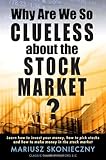For the past month or so, I’ve been performing a bit of an experiment. I’ve been taking 10% of all income from this and my other sites and splitting it between an investment account and my Lending Club portfolio. The idea, of course, is to see which performs better.
In order to do that, I needed to find a good way to calculate what the real rate of return to me is. Here’s the formula I settled on.
(1- (Total Deposits / ((Total Deposits + (Total Interest Received – Fees Paid))*.97)))
I should qualify the rest of this by saying that I’m not the best at math, so there may be flaws here. Feel free to let me know in the comments. Also, if there’s a better way to go about this, please let me know in the comments as well.
 So, let’s break that down a bit. The *.97 part is meant to give some accounting for inflation. It takes 3% right off the top as an inflationary cost. Is 3% enough? That’s debatable, but it seems like a fair average, historically. This bit: (Total Interest Received – Fees Paid) is merely the total income on the portfolio. I’m missing a small bit here, as the cost of the principle is not equal to the actual principle of the portfolio. That’s because I live in a state where Lending Club doesn’t have the right permissions to allow me to directly invest in the loans. So, I’m having to go through their foliofn note trading platform to buy my notes and there is usually a small premium on the notes. I haven’t decided on a good way to really include that in, or if it really should be. The next bit, (Total Deposits / ((Total Deposits + that previous bit is basically determining the % growth. Total deposits divided by current “balance”. The 1- part at the beginning just gives the cleaned up decimal percentage.
So, let’s break that down a bit. The *.97 part is meant to give some accounting for inflation. It takes 3% right off the top as an inflationary cost. Is 3% enough? That’s debatable, but it seems like a fair average, historically. This bit: (Total Interest Received – Fees Paid) is merely the total income on the portfolio. I’m missing a small bit here, as the cost of the principle is not equal to the actual principle of the portfolio. That’s because I live in a state where Lending Club doesn’t have the right permissions to allow me to directly invest in the loans. So, I’m having to go through their foliofn note trading platform to buy my notes and there is usually a small premium on the notes. I haven’t decided on a good way to really include that in, or if it really should be. The next bit, (Total Deposits / ((Total Deposits + that previous bit is basically determining the % growth. Total deposits divided by current “balance”. The 1- part at the beginning just gives the cleaned up decimal percentage.
Let’s walk some numbers through it. We’ll use these:
Total Deposits = $1000
Total Interest Received = $25
Fees Paid = $5
So, plugging those numbers in we get: (1-(1000/((1000+(25-5))*.97)))
We’ll do this old school and solve as we go, showing our work. Parenthesis get priority, followed by addition and subtraction. So, we next end up with (1-(1000/(1020*.97))). Then, we end up with (1-(1000/989.4)). Next step, 1-1.011 = -.011. So, we get a return of -1.1%.
Seems logical right? In the case of my portfolio, the result comes back as 10%. That’s a pretty good number, if you ask me. I haven’t had any defaults yet, and I’ve had loans in my portfolio since January of 2010. (the experiment I talked about earlier only began in July, however, but previous portfolio is included for easy of calculations)
I’m sure there’s some much more complicated formula that would take in risk of default on remaining invested principle, and a way to get the most accurate number, but really, I’m not sure that I want to take it that far. This will never get to the point, I don’t think, of having a majority of my overall portfolio in it. It’s not nearly safe enough for that, and my retirement accounts will remain in more traditional markets.
But, with results like 10%, and the current state of the stock market, one has to begin to wonder if the stock market is the safer of the two markets. The stock market certainly isn’t showing returns of 10% recently.

I started this blog to share what I know and what I was learning about personal finance. Along the way I’ve met and found many blogging friends. Please feel free to connect with me on the Beating Broke accounts: Twitter and Facebook.
You can also connect with me personally at Novelnaut, Thatedeguy, Shane Ede, and my personal Twitter.

 But, has this evolution of the stock market become a cancer on the world? So much of our economy relies on the stock market as an indicator of the world economic health. If stocks drop, so too does much of the rest of the economy. And if a company does poorly, and many of it’s shareholders sell, causing the price to drop, it can have a ripple effect on the rest of the industries companies, or even on the stock market as a whole. In May of 2010, just such a sell off caused a drop in the stock market that had the entire world trembling in fear of a worldwide economic collapse. It was caused by a trigger in an computer algorithm that was mistakenly set wrong. Many of the stock markets closed early to try (unscheduled rather than one of the normal stock market holidays) and curb the crash and hold off a more drastic drop.
But, has this evolution of the stock market become a cancer on the world? So much of our economy relies on the stock market as an indicator of the world economic health. If stocks drop, so too does much of the rest of the economy. And if a company does poorly, and many of it’s shareholders sell, causing the price to drop, it can have a ripple effect on the rest of the industries companies, or even on the stock market as a whole. In May of 2010, just such a sell off caused a drop in the stock market that had the entire world trembling in fear of a worldwide economic collapse. It was caused by a trigger in an computer algorithm that was mistakenly set wrong. Many of the stock markets closed early to try (unscheduled rather than one of the normal stock market holidays) and curb the crash and hold off a more drastic drop.